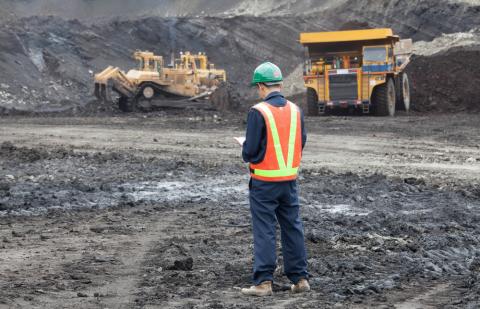By Keeping Old Coal-Fired Plants Online, Australian Utilities Avoid Remediation Costs
The Australian National Electricity Market (NEM) had approximately 7,600 megawatts of excess capacity in its system this past June, a bellwether month.
That excess and untapped capacity represented about 16 percent of total capacity across a system that provides electricity to 19 million Australians, more than 80 percent of the population.
Such excess electricity-generation capacity has created long-term downward pressure on wholesale electricity prices and hurt utility-company profitability. Yet the status quo persists and the market has not adjusted by removing older coal-generation capacity from its system.
The question is why. The answer, put simply, is that site cleanup costs, which are triggered once a power station is closed, are a significant barrier to exit. Utility companies, frankly, don’t want to pay remediation costs they can avoid by continuing to run out-dated coal-fired plants.
AND MAKE NO MISTAKE, REMEDIATION COSTS ARE HUGE. Here’s an example. When Alcoa Inc. shut its Point Henry aluminum smelter in Victoria, it also closed the sources of its electricity, the 51-year-old 150-megawatt brown coal Anglesea power station and coal mine. Alcoa, a U.S. company, filed papers with the U.S. Securities and Exchange Commission putting costs for “asset retirement obligations and environmental remediation resulting from the decision to permanently close and demolish this facility and the related mine rehabilitation” at from US$40-45 million with additional employee-related costs of US$20-25 million. The remediation number alone pencils out between AU$380,000 and AUD$430,000 per megawatt, a frightful cost indeed.
Victoria has four remaining electricity generators that run on brown coal—the low-grade lignite that burns inefficiently and dirty. Those generators, Loy Yang A, Loy Yang B, Hazelwood and Yallourn, have a cumulative capacity of 6,260 megawatts and account for approximately half of Victoria’s electricity capacity. Using the cost per megawatt of site remediation from Anglesea as a benchmark, the total cost for site cleanup at these remaining brown-coal generators would run AU$2.4-2.7 billion (almost $2 billion in U.S. dollars).
These numbers are sharply higher than the equivalent cumulative remediation cost estimate of AU$500 million put forth by AEMO (Australian Energy Market Operator), a gap that suggests Australian regulators are astutely ignoring the problem.
The 1,600-megawatt Hazelwood plant, which is almost 50 years old, is the most emissions-intensive generator in the entire Australian National Electricity Market, and among the most emissions-intensive in the world. The Anglesea remediation costs suggest it would run AUD$610-$690 million to clean up Hazelwood once it is shuttered, significantly higher than the AUD 69 million provided for “site restoration” in the 2014 accounts of International Power (Australia), which owns 72 percent of Hazelwood.
Rehabilitation bonds for all of the brown coal mines that supply the Victorian generators were set in the 1990s at “interim” amounts of $15 million and have never been modernized despite significant expansion of the mines and a commensurate increase in total rehabilitation liability over the past 20 years.
Accurate estimates of site remediation costs are subject of course to the size of a mine, specific site-remediation requirements, and definitions around what “remediation” actually means. Notwithstanding all this, the cumulative remediation costs for the brown coal generators in Victoria could run into the billions rather than the millions of dollars. The combined sum of rehabilitation bonds and company provisions are clearly, in a word, insufficient to fund rehabilitation requirements, especially if market conditions force early retirement—as they may well do.
In the absence of better government policy measures—ones aimed specifically and assertively at encouraging retirement of these outdated and very emissions-intensives generators—these plants will continue to operate but only to avoid paying for rehabilitation liabilities.
Tim King is IEEFA’s director of energy policy, Australasia.












